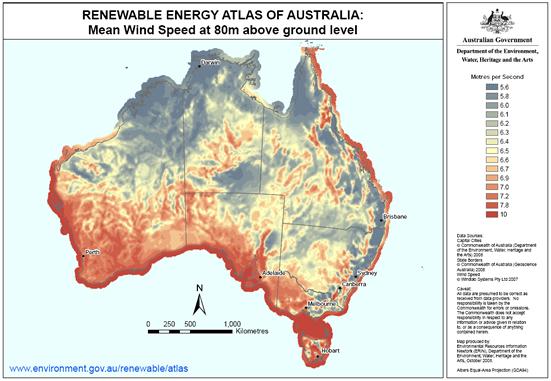Environment & Energy
Related: About this forumW. Australian grid may become first big victim of “death spiral”
By Giles Parkinson on 30 January 2014
The chances of the West Australian electricity grid becoming the first to fall victim to the so-called “death spiral” for utilities appears to have increased after it was revealed this week that the gap between the cost to generate, transmit and sell electricity and the charge to consumer has widened.
The “death spiral” is a term coined by utilities in an attempt to defend their business models against the rise of the “pro-sumer”, customers who are no longer just buying energy but who are sourcing cheaper electricity from their own generation, usually rooftop solar, and cutting demand from the grid.
swisThe WA grid, however, has helped create its own death spiral because it has never recovered the cost of its largely fossil-fuel fired electricity from the consumer. The costs keep rising, and now it has emerged that electricity demand has fallen so low that the major utilities may be forced to pay for fossil-fuel generation they will never use.
It is hard to imagine a more unsustainable situation, and it is quite possible that the WA grid is the most at risk in the developed world from the emergence of cheaper solar and storage solutions.
Synergy, the WA Government-owned electricity and gas retailer...
http://reneweconomy.com.au/2014/wa-grid-may-become-first-big-victim-of-death-spiral-41428
phantom power
(25,966 posts)unhappycamper
(60,364 posts)Climate change has become an increasing concern in Australia in recent years, and protection of the environment is a major political issue.[191][192] In 2007, the First Rudd Government signed the instrument of ratification of the Kyoto Protocol. Nevertheless, Australia's carbon dioxide emissions per capita are among the highest in the world, lower than those of only a few other industrialised nations.[193] Rainfall in Australia has slightly increased over the past century, both nationwide and for two quadrants of the nation,[194] According to the Bureau of Meteorology's 2011 Australian Climate Statement, Australia had lower than average temperatures in 2011 as a consequence of a La Niña weather pattern, however, "the country's 10-year average continues to demonstrate the rising trend in temperatures, with 2002–2011 likely to rank in the top two warmest 10-year periods on record for Australia, at 0.52 °C above the long-term average".[195] Water restrictions are frequently in place in many regions and cities of Australia in response to chronic shortages due to urban population increases and localised drought.[196][197] Throughout much of the continent, major flooding regularly follows extended periods of drought, flushing out inland river systems, overflowing dams and inundating large inland flood plains, as occurred throughout Eastern Australia in 2010, 2011 and 2012 after the 2000s Australian drought.
quadrature
(2,049 posts)sparsely populated areas,
will likely have crazy electricity prices
with -->
strong incentive to produce your own electricity
NickB79
(19,233 posts)I read the article, and while the utility puts on a good face, it doesn't sound like they've got very good odds.
So, once they're far enough into the death spiral, what happens? Does the utility just declare bankrupcy and shut down? Is that even possible, or would the Aussie government step in and support them financially?
kristopher
(29,798 posts)Denmark has been leading the way in dealing with this problem. They have a recognition of the end role of the various technologies and have structured a system to both encourage the transition to renewables while paying off the debts incurred with the stranded technologies.
I don't think there is a one size fits all set of policies that will work though. Just the differences in population density make the two cases far to dissimilar to even make more than a cursory comparison. This is the canary in the coal mine, so to speak, and it should give the utilities around the world an incentive to begin preparing to follow Denmark's example in making the inevitable a planned transition.
Iterate
(3,020 posts)Last edited Sat Feb 1, 2014, 12:19 PM - Edit history (1)
I'd started to write about companies that had seen the light and were migrating to a new model and market, but this bunch is so far off the starting line that it's hard to imagine anything short of a revolution or mass refusal getting them going. I'm not even seeing hints in news or blogs that the company is even considering a different plan for 2020 other than more of the same.
http://carma.org/company/detail/22280
Total Power Plants: 26
Red Alerts(carma designation): 20 Power Plants
2009:
123,290 Tons CO2
142,350 MWh energy
866 Intensity
91.83% Fossil
Their lineup includes this gem, built in 1989:
DAMPIER SECWA Powerplant 2009:
Tons CO2: 8,738
MWh Energy: 6,172
Intensity: 1,420
http://enipedia.tudelft.nl/wiki/Dampier_Secwa_Powerplant
ETA, what they have to say about themselves is telling: an old-fashioned, vertically-integrated company that's just clueless in dealing with climate change and the economic changes coming down on them. This is from the company site, under the "Environmental Programs" header:
environmentally sensitive area program
cleaning up oil spills
To reduce the impact of the electricity network on animals, Western Power considers the design of new work and may install bird diverters or create nesting platforms on the existing network. Find out about how we reduce the impact of the network on animals through these initiatives:
bird conservation
conserving cockatoos
protecting possums
http://www.westernpower.com.au/aboutus/Environment/environmentalProgram/EnvironmentalPrograms.html
It's not as if they don't have a viable option:


kristopher
(29,798 posts)It is adapt or die for the utilities. Those who aren't preparing to transition to a far smaller role in our energy system are simply going to fail.
Anytime I think of this transition and its effect on stockholders for the utilities, I'm reminded of how little TPTB were willing to halt 'progress' to mitigate the effects of modernization on labor. Why should capital be any different than labor?